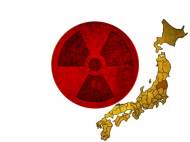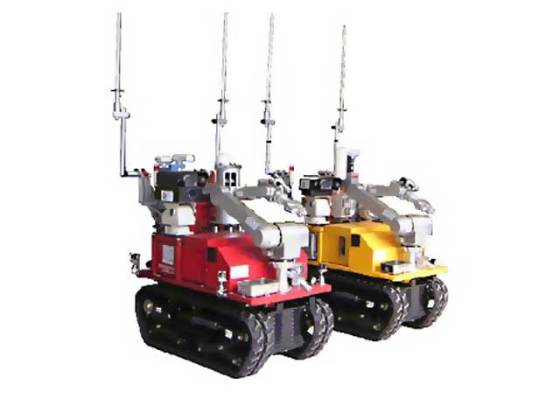Monirobo robots used to monitor radiation in Fukushima
 After the 9.0 earthquake and the devastating tsunami that struck off the coast of Honshu Island, the cooling systems of three reactor units at the Fukushima Dai-ichi nuclear power plant became severely damaged. Although Japan is well known for their share in robot development, there are no robots built to deal with nuclear disasters and Japanese Ground Self-Defense Forces and the Tokyo Fire Department on site are exposed to high levels of radiation.
After the 9.0 earthquake and the devastating tsunami that struck off the coast of Honshu Island, the cooling systems of three reactor units at the Fukushima Dai-ichi nuclear power plant became severely damaged. Although Japan is well known for their share in robot development, there are no robots built to deal with nuclear disasters and Japanese Ground Self-Defense Forces and the Tokyo Fire Department on site are exposed to high levels of radiation.
Center for Robot-Assisted Search and Rescue (CRASAR) at Robot Texas A&M University, a crisis response and research organization which strives to direct and exploit new technology development in robotics and unmanned systems for humanitarian purposes worldwide, claims that small rescue robots aren’t usable in radiated environments because the CCD chips of their cameras are fairly sensitive to radiation and it is nearly impossible to work remotely if video is down. According to them, nuclear disaster robots need to be big, beefy, slow, and simple.
After the Tokaimura nuclear accident in 1999 in which two workers died, Japan’s Nuclear Safety Technology Centre in association with the Ministry of Economy, Trade and Industry (METI) developed a disaster monitoring robot named Monirobo (“Monitoring Robot”). It is designed to operate at radiation levels too high for humans and it is used to monitor the hazardous environments for leaks and alarming readings.
Monirobo comes in two versions, which aside different colors have different sensors which are useful in nuclear disasters. Both have the same dimensions of 0.8 x 1.5 x 1.5 meters (2.6 x 5 x 5 feet) (W x L x H) and weight 600 kg (a bit over 1,300 pounds). The robots have to carry heavy shielding to protect the electronics and cameras on them. They run on a pair of caterpillar tracks with a speed of up to 40 meters per minute (131 feet per minute). In order to control them, the operator uses wireless technology usable on a 1.1-kilometer (almost 0.7-mile) distance.
The robot has a manipulator arm removing obstacles and collecting samples. The Red Manirobo is equipped with a radiation detector, 3D camera system and temperature and humidity sensors, while the Yellow Manirobo has tools for collecting dust samples and sensors for flammable gas.
Aside Manirobo, the Japanese government used help from the U.S. military which sent Global Hawk – an unmanned high-altitude reconnaissance aircraft over Fukushima plant to take a closer look at its troubled reactors. US company iRobot also donated two of their 510 PackBots and two 710 Warrior Robots to Japan.
The unfortunate events often trigger the need for change and development of new tools that could help us counter the effects caused by disasters. Aside the need for a larger number of more versatile search and rescue robots, there is a need for robots capable to aid in various hazardous environments.










I hope that can really help!
At last Robots find use in calamities.
Dr.A.Jagadeesh Nellore(AP),India
I’m sorry for all the losses in this tragedy and I wish our nation recovers fast.
I hope it will be helpful for monitor radiation in Fukushima…